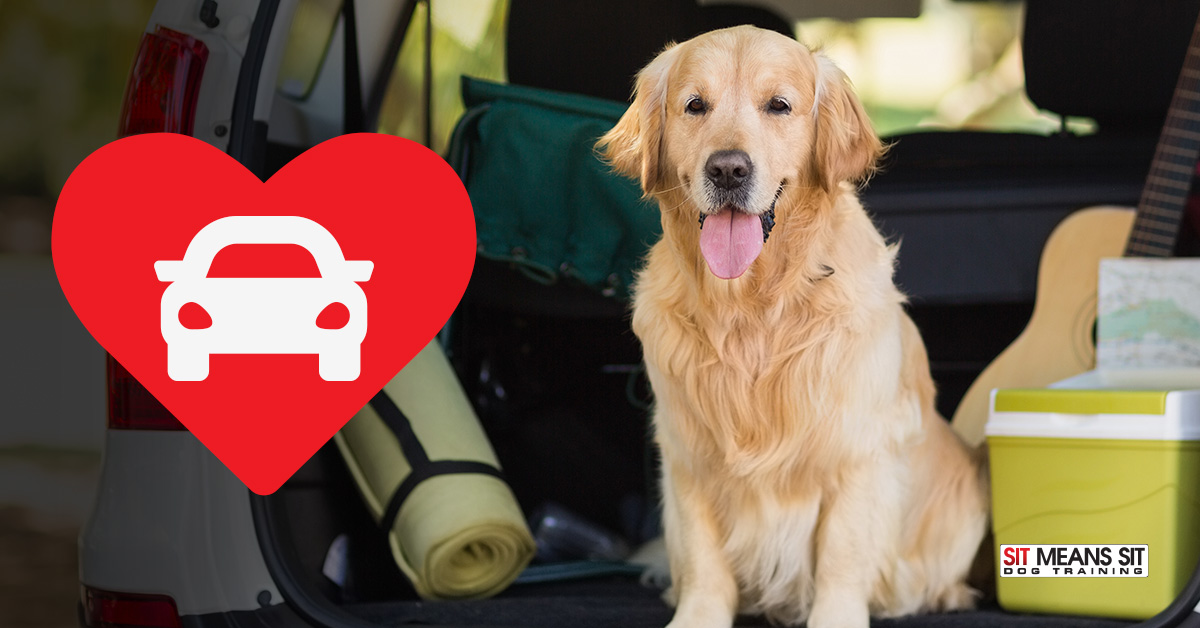
How to Car Train Your Dog
Many dogs can’t wait to get into the car. For them, it means an exciting new adventure or a trip to the dog park. They can’t wait to stick their head out of the window and enjoy the fresh air. But for some dogs, car rides are terrifying. When they hear your keys, they run for the hills. If your dog gets anxiety in the car, or even gets sick, it probably makes any trips way more challenging.
Motion Sickness and Anxiety
Dogs can have two issues in the car: being nervous/anxious and actually get carsick. If a dog has ever gotten sick in the car, they start to associate negative experiences with the car. Then in the future, they can become anxious or aggressive when they are told to get in the car. They can even worry themselves sick and become so stressed in the car that they actually become nauseous from that.
While you can sometimes avoid bringing your dog in the car, sometimes there is no other choice (like when you’re trying to go to the vet). Luckily there are ways to help your dog learn to love the car!
Restrain Your Dog
One way to help your dog feel better in the car is to use the proper restraints. Using a harness or seat belt will help prevent motion sickness since they will face forward and be still. When your dog isn’t restrained they can move around or look out the windows, causing nausea. You can also use a crate if that would better for your specific dog.
Before putting your dog in a crate in the car, make sure your dog is crate trained. If your dog hasn’t been properly crate trained, they may not associate the crate with a safe space and may begin to feel even more anxious. If you don’t know where to start with crate training, contact our Fort Collins professional dog trainers for your free consultation.
Keep the Air Flowing
Another reason your dog may be getting sick in the car is because of the air pressure. Try to keep fresh air flowing to the area of the car that your dog is sitting in. Crack your window an inch to balance the pressure. It will also provide some ventilation and a breeze, which can help with nausea.
Avoid Food
If you are going on a longer road trip, try to fast your dog before going out of the road. When your dog has an empty stomach, it is much harder for them to vomit. Withholding food can make their stomach more settled and keep them feeling good. Give them a small treat before the ride to avoid low blood sugar if you know that is a problem in your dog.
It may also be wise to wait a bit when you arrive at your destination before feeding your dog again, allowing their stomach time to settle.
Try Going Somewhere New
Instead of only taking your dog in the car to vets or other appointments, try taking them somewhere enjoyable. Put them in the car and head to the park or the pet store for a fun new toy. Once they experience a car ride with a fun destination, they may start to associate car rides with enjoyable experiences. They will be less anxious in the car and therefore not be sick. You can also try taking your dog in a different car, which may help them change the association of a negative experience if they’ve only ever been in one car.
Try Medications or Supplements
If you notice these other methods don’t work, it may be time to try a medication. Consult with your vet to see if your dog would benefit from over-the-counter antihistamines and anti-nausea drugs. If the problem is very severe, they can also give anti-anxiety medication or sedatives to help them relax during the car ride. You can also try natural calming supplements. There are options on the market that contain chamomile and tryptophan, as well as other natural ingredients.
With these techniques, hopefully, you can work to overcome your pup’s fear of car rides and start to have more stress-free trips! Good luck!
